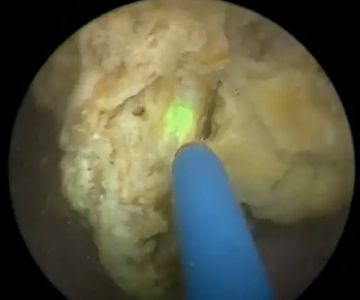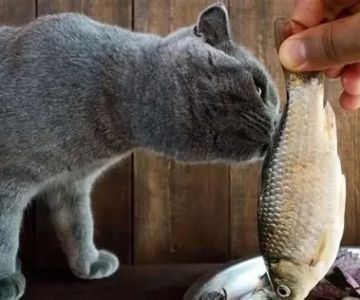- Why Chocolate Is Toxic for Cats
- How Chocolate Affects Cats
- Symptoms of Chocolate Poisoning in Cats
- What to Do if Your Cat Eats Chocolate
- How to Keep Your Cat Safe from Chocolate
Why Chocolate Is Toxic for Cats
Chocolate is a common treat for humans, but it poses significant risks to cats. The reason chocolate is toxic to cats lies in the presence of two substances: theobromine and caffeine. These chemicals are stimulants found in cocoa beans, which are used to make chocolate. While humans can metabolize these substances relatively quickly, cats (like dogs) are much more sensitive to them.
The theobromine in chocolate affects the central nervous system and heart, leading to dangerous symptoms. Even small amounts of chocolate can cause poisoning in cats, and the darker the chocolate, the more harmful it is due to higher levels of theobromine. For example, dark chocolate and baking chocolate contain much higher concentrations of theobromine than milk chocolate, making them even more dangerous for your feline friend.
How Chocolate Affects Cats
When a cat ingests chocolate, the theobromine and caffeine quickly enter the bloodstream, affecting their body systems in several ways. These substances can increase heart rate, cause seizures, and raise body temperature, all of which can be life-threatening. Chocolate also has a diuretic effect, which can lead to dehydration and electrolyte imbalances if consumed in significant amounts.
Furthermore, chocolate can cause gastrointestinal distress in cats. They may experience vomiting, diarrhea, or an upset stomach shortly after ingesting chocolate. The severity of these symptoms depends on the type and amount of chocolate eaten, as well as the size of the cat. Cats that consume large amounts of chocolate may face more severe toxicity, requiring immediate medical attention.

VCA Arboretum View Animal Hospital, 2551 Warrenville Rd, Downers Grove, IL 60515, USA
See DetailsSymptoms of Chocolate Poisoning in Cats
If your cat has eaten chocolate, it's important to be aware of the symptoms of chocolate poisoning. These can vary depending on the amount and type of chocolate consumed, but common signs include:
1. Vomiting and Diarrhea
One of the first signs of chocolate poisoning is gastrointestinal upset. Your cat may vomit or have diarrhea as their body tries to eliminate the toxins.
2. Increased Heart Rate and Restlessness
The theobromine in chocolate can cause an increase in heart rate and restlessness. If your cat becomes unusually hyperactive or has a rapid heartbeat, it could be due to chocolate consumption.
3. Tremors or Seizures
More severe cases of chocolate poisoning can cause muscle tremors or seizures. This occurs because the theobromine stimulates the nervous system excessively, leading to these neurological symptoms.
4. Excessive Thirst or Urination
Chocolate can act as a diuretic, leading to increased thirst and frequent urination. If your cat is drinking or urinating more than usual, this may be a sign of chocolate poisoning.
5. Elevated Body Temperature
A significant rise in body temperature is another warning sign. If your cat feels unusually warm to the touch or seems to be panting, it could be a sign of chocolate toxicity.
What to Do if Your Cat Eats Chocolate
If your cat has eaten chocolate, it’s important to take action immediately. The first step is to assess how much chocolate your cat has consumed and what type of chocolate it was. The darker and more concentrated the chocolate, the more dangerous it is. Here’s what to do:
1. Contact Your Veterinarian
Even if you’re unsure about how much chocolate your cat has eaten, it’s best to contact your veterinarian or an emergency animal clinic right away. They can provide advice on what steps to take next and may want to examine your cat based on the symptoms they’re showing.
2. Induce Vomiting (Only if Instructed)
If your vet advises it, they may recommend inducing vomiting to help your cat expel the chocolate from their system before it gets absorbed. However, this should only be done under professional guidance, as inducing vomiting incorrectly can cause harm.
3. Provide Supportive Care
In some cases, your veterinarian may administer activated charcoal to absorb any remaining toxins and help prevent further absorption. In severe cases, your cat may need intravenous fluids to address dehydration and manage symptoms.
How to Keep Your Cat Safe from Chocolate
Prevention is the best way to ensure your cat doesn’t suffer from chocolate toxicity. Here are some tips to keep your cat safe from chocolate:
1. Keep Chocolate Out of Reach
The simplest way to prevent chocolate poisoning is by keeping chocolate products well out of your cat’s reach. Store chocolates in sealed containers or cupboards where your cat cannot access them. This is particularly important during holidays like Easter, Halloween, or Christmas when chocolate treats are more prevalent.
2. Educate Family and Friends
It’s essential that everyone in your household understands the dangers of chocolate to cats. This includes educating children, who might unknowingly leave chocolate out where your cat can find it.
3. Be Cautious with Gifts
If you receive gifts containing chocolate, make sure they are placed in areas where your cat cannot reach. Avoid sharing chocolate with your cat, even if they appear curious or beg for it. Offer safer treats designed for cats instead.
If you have any concerns about your cat’s health or need advice on keeping them safe from harmful foods, consider visiting Hidden Brook Veterinary for expert recommendations and the best pet care products.











